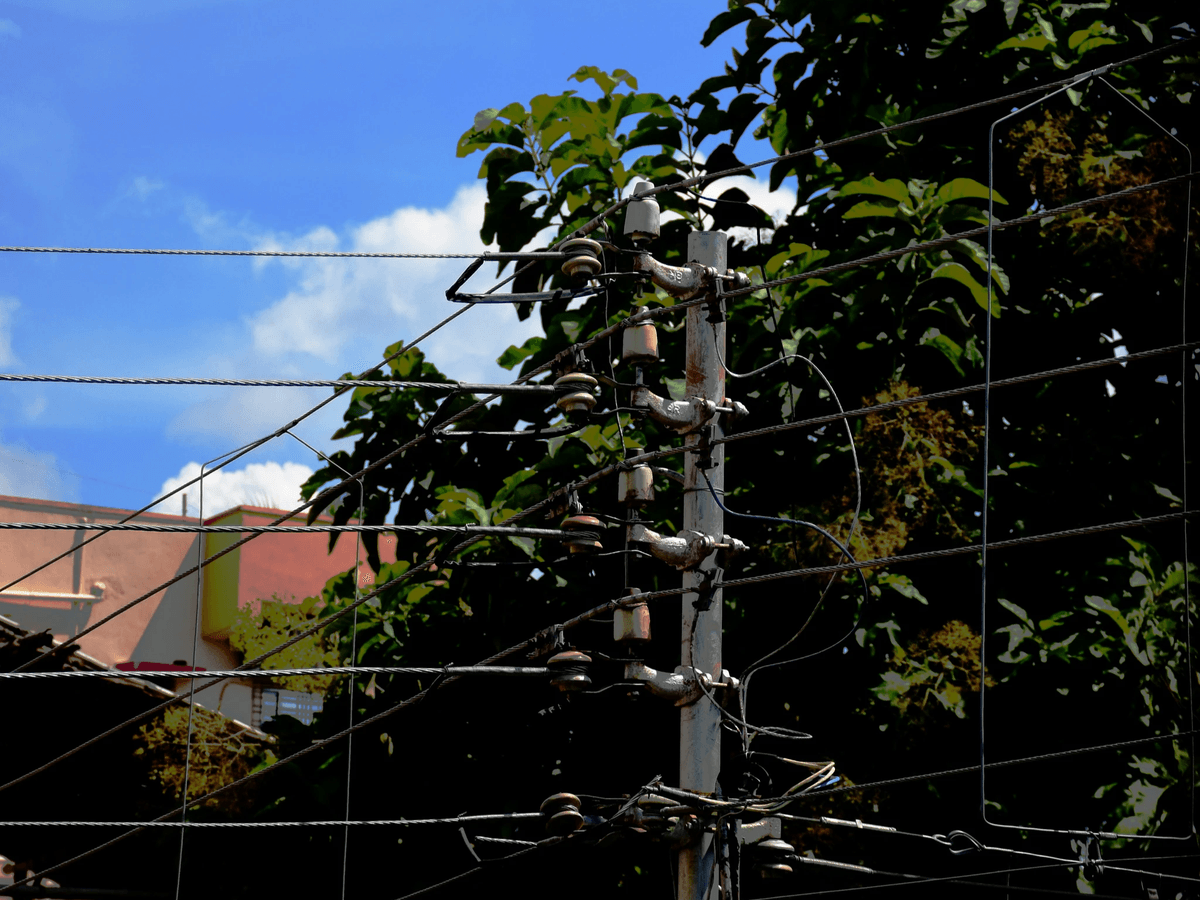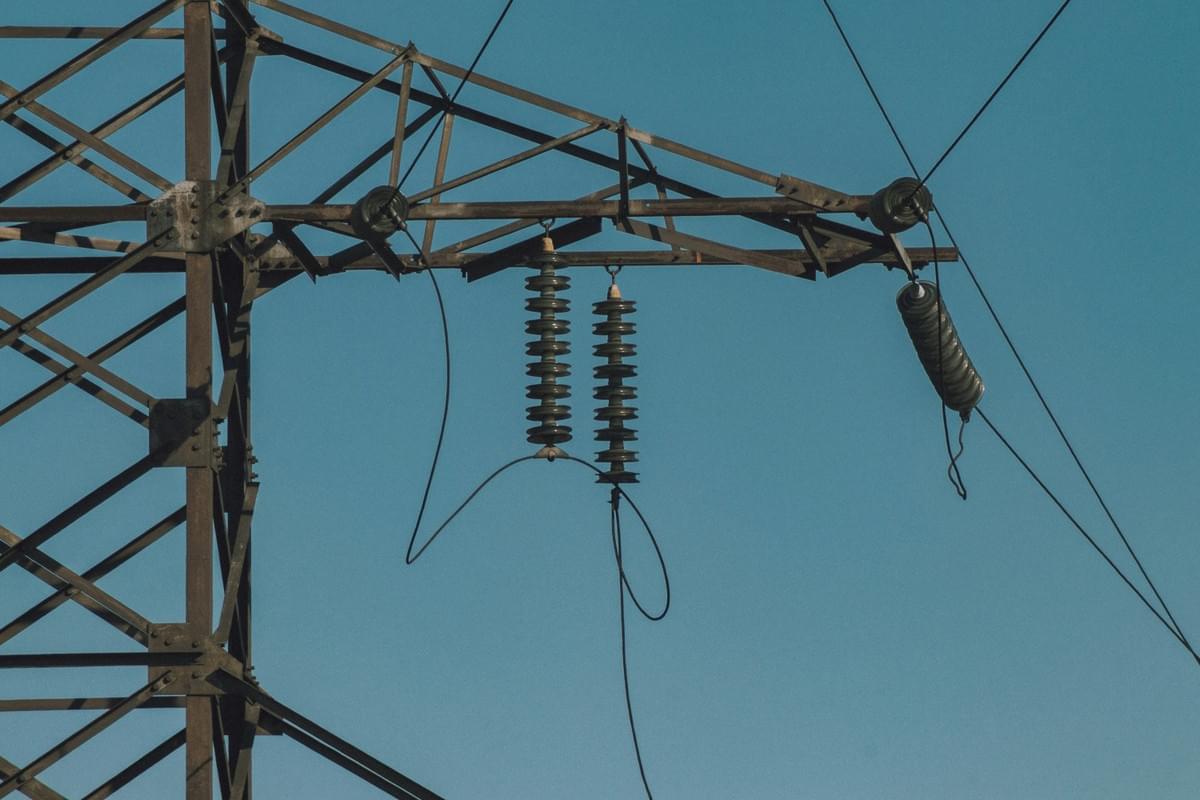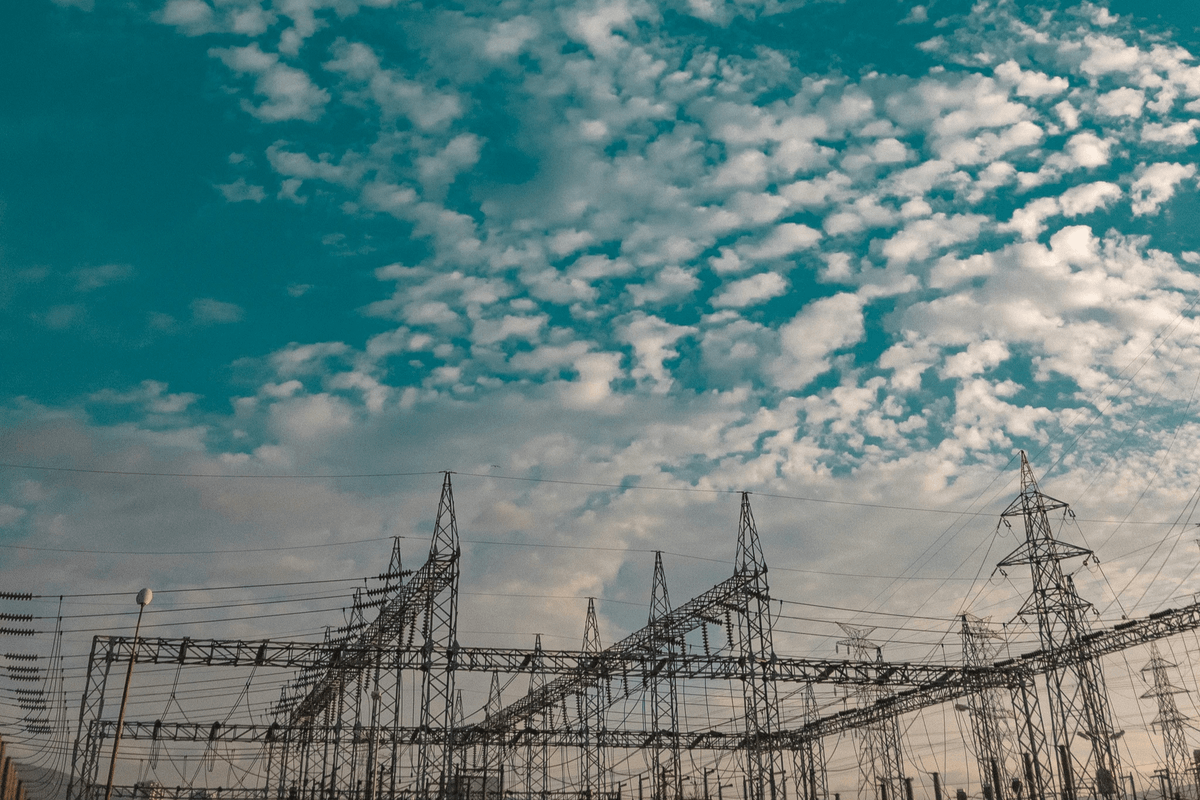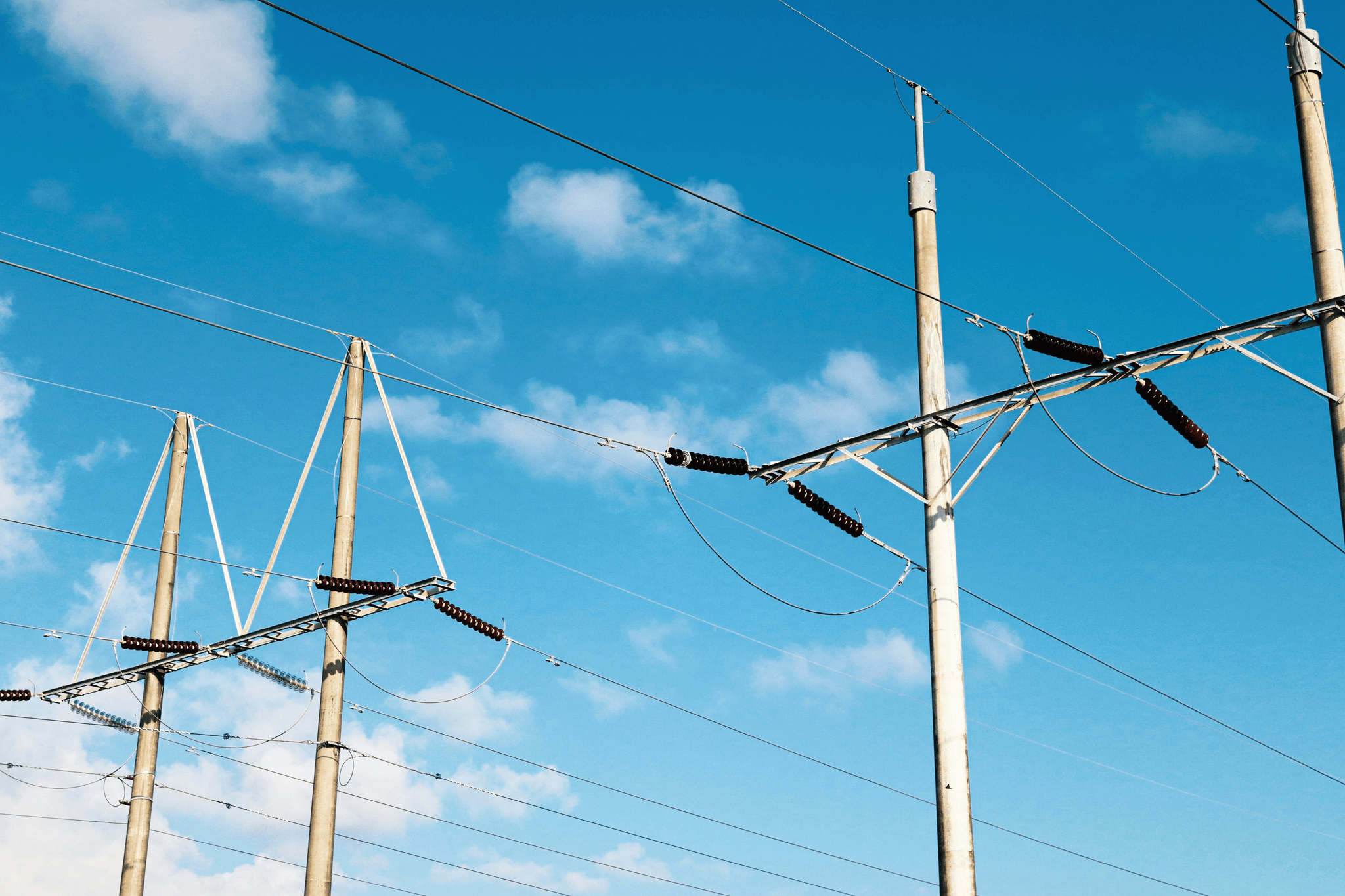Introduction

Overhead transmission lines are the lifelines of our electricity distribution systems, carrying power from generation sources to substations and ultimately to our homes and businesses. But what exactly is the overhead transmission line? It’s a system that utilizes conductors suspended on towers to transmit electrical energy efficiently over long distances, ensuring that we have the power we need when we need it. Understanding these lines is crucial not only for engineers but also for anyone interested in how electricity flows through our communities.
When delving into overhead transmission lines, it becomes essential to recognize the importance of understanding their components. Each part plays a pivotal role in ensuring safe and efficient power delivery, from conductors that carry the electricity to insulators that prevent unwanted flow. By grasping these elements, one can appreciate why quality matters in overhead transmission lines and how they impact our daily lives.
Moreover, exploring types of transmission lines reveals a fascinating world beyond just overhead structures. What are the three types of transmission lines? They include high voltage, medium voltage, and low voltage lines—each designed for specific applications within the electrical grid. Additionally, understanding what is transmission overhead helps clarify how these systems function as a whole and their significance in modern energy infrastructure.
Overview of Overhead Transmission Lines

Overhead transmission lines are critical components in the electrical power distribution system, enabling the transfer of electricity from generation points to consumers. These lines consist of conductors suspended between towers and are designed to withstand various environmental conditions while maintaining efficient energy flow. Understanding what overhead transmission lines are and how they function is essential for grasping their role in modern infrastructure.
Definition and Functionality
So, what is the overhead transmission line? Essentially, it’s a series of conductors that carry high-voltage electricity over long distances, typically supported by tall structures known as towers. These lines play a pivotal role in ensuring that electricity generated at power plants reaches homes and businesses efficiently, minimizing energy losses along the way. The functionality of these lines lies not just in their ability to transport power but also in their design, which allows for flexibility amidst changing weather conditions.
Historical Development of Transmission Lines
The historical development of transmission lines traces back to the late 19th century when electricity was first harnessed for widespread use. Early systems were rudimentary; however, advancements led to the establishment of overhead transmission lines as a viable method for delivering power over long distances. Innovations such as alternating current (AC) technology significantly improved efficiency and laid the groundwork for modern electrical grids that we rely on today.
Key Applications in Power Distribution
Overhead transmission lines serve several key applications in power distribution that impact our daily lives significantly. They connect remote generation sites—such as wind farms or hydroelectric plants—to urban centers where demand is highest, effectively bridging vast distances with minimal loss of energy. Additionally, understanding what are the three types of transmission lines—high voltage, medium voltage, and low voltage—helps clarify how these overhead systems cater to different needs within our electric grid architecture.
Major Components of Transmission Lines

Understanding the major components of overhead transmission lines is crucial for grasping how electricity travels from one point to another. These components work in harmony to ensure efficient power distribution, making it essential to explore their roles in the overall system. Let’s dive into the three primary components: conductors, insulators, and towers.
Conductors: The Electricity Carriers
Conductors are the unsung heroes of overhead transmission lines, responsible for carrying electricity across vast distances. Typically made from materials like aluminum or copper, they facilitate the flow of electrical current while minimizing energy loss. When asking What is the overhead transmission line? it's vital to recognize that conductors are at its heart, acting as the arteries through which power flows.
The choice of conductor material can significantly affect performance and efficiency; for example, Aluminum Conductor Steel Reinforced (ACSR) combines strength with lightweight properties ideal for long spans. Additionally, advancements in conductor technology continue to enhance capacity and reduce losses, making them more efficient than ever before. Understanding what are the three types of transmission lines also involves recognizing how different conductors serve various voltage requirements—high voltage lines often utilize specialized conductors designed for optimal performance.
Insulators: Keeping Electricity in Check
Insulators play a pivotal role in ensuring that electricity remains safely contained within overhead transmission lines while preventing unwanted leakage or short circuits. Made from materials like ceramic or composite polymers, these components prevent electrical current from escaping into surrounding structures or environments—essentially keeping electricity in check! Without effective insulators, we would face significant safety hazards and operational inefficiencies when discussing what is transmission overhead.
The importance of insulative properties cannot be overstated; they not only protect infrastructure but also maintain system reliability by ensuring that conductors function effectively under various environmental conditions. For instance, ceramic insulators offer excellent durability against harsh weather conditions but may be heavier compared to their composite counterparts. In contrast, composite insulators provide lighter alternatives with enhanced resistance to pollution and mechanical stress—showcasing how diverse insulation techniques can cater to different needs within overhead transmission lines.
Towers: The Supporting Structure
Towers serve as the backbone of overhead transmission lines by providing essential support and maintaining proper spacing between conductors. These towering structures come in various designs—such as lattice towers or monopoles—each tailored for specific applications based on factors like terrain and voltage levels. Understanding what are the three types of transmission lines also involves recognizing how tower design impacts overall efficiency and safety.
The height and material used in tower construction influence not just aesthetics but also functionality; taller towers can accommodate higher voltage levels while minimizing electromagnetic interference with surrounding areas. Moreover, innovative designs have emerged that prioritize both structural integrity and environmental impact—a crucial consideration as we move towards more sustainable energy solutions. Ultimately, towers ensure that our overhead transmission lines remain stable and effective conduits for delivering power where it’s needed most.
Types of Conductors Used

Conductors are the unsung heroes in the world of electricity; they carry the electrical current from one point to another, ensuring that homes and businesses receive their much-needed energy. In this section, we will explore three primary types of conductors used in overhead transmission lines: Aluminum Conductor Steel Reinforced (ACSR), All Aluminum Alloy Conductor (AAAC), and Aerial Bundled Cables (ABC).
Aluminum Conductor Steel Reinforced
Aluminum Conductor Steel Reinforced (ACSR) is a popular choice for overhead transmission lines due to its strength and lightweight properties. This type of conductor consists of a core made from steel strands surrounded by aluminum strands, combining the tensile strength of steel with the conductivity of aluminum. The result? A robust conductor that can handle high loads while minimizing sag over long distances—perfect for what is transmission overhead.
Moreover, ACSR conductors are known for their durability and resistance to corrosion, making them ideal for various environmental conditions. They can be found in many regions across the globe, playing a pivotal role in power distribution networks. So when pondering What is the overhead transmission line? think about ACSR as a key player in keeping our lights on!
All Aluminum Alloy Conductor
Next up is the All Aluminum Alloy Conductor (AAAC), which has gained popularity due to its enhanced performance compared to traditional aluminum conductors. AAAC is composed entirely of aluminum alloy materials that provide improved strength-to-weight ratios and better resistance against corrosion than standard aluminum conductors. This makes them particularly suitable for areas where environmental factors can take a toll on conductor integrity.
In addition to being lightweight and durable, AAAC conductors also offer excellent conductivity—essentially delivering more bang for your buck when it comes to energy transfer efficiency! Their use in overhead transmission lines ensures that electricity reaches its destination with minimal losses along the way. So if you're curious about what are the three types of transmission lines commonly used today, be sure not to overlook AAAC!
Aerial Bundled Cables
Finally, let’s talk about Aerial Bundled Cables (ABC), which have revolutionized how we think about overhead transmission lines altogether! These cables consist of multiple insulated conductors bundled together tightly, reducing electromagnetic interference and enhancing safety during storms or high winds—definitely an upgrade over traditional bare wires! ABC systems are particularly useful in urban settings where space constraints make traditional towers impractical.
Aerial Bundled Cables also minimize risks associated with accidental contact by keeping all live components neatly contained within their insulation layers—making them safer for both people and wildlife alike! Plus, they’re visually appealing compared to conventional setups; no more sprawling towers cluttering up landscapes! When considering What are the three types of transmission lines? remember that ABC offers an innovative solution tailored for modern needs.
Insulation Techniques and Materials

Ceramic Insulators vs. Composite Insulators
Ceramic insulators have long been favored in overhead transmission lines due to their durability and excellent electrical properties. They can withstand harsh weather conditions without degrading, making them a reliable choice for long-term use. On the other hand, composite insulators are gaining popularity because they are lighter and more resistant to breakage, making installation easier and reducing costs associated with maintenance.
Both types of insulators serve the same fundamental purpose: keeping electricity from escaping into the environment while supporting conductive materials. However, when considering what are the three types of transmission lines—high, medium, and low voltage—the choice between ceramic and composite often hinges on specific application requirements. Ultimately, selecting between these two options involves weighing factors like environmental conditions, budget constraints, and operational longevity.
Importance of Insulative Properties
The importance of insulative properties in overhead transmission lines cannot be overstated; they ensure that electrical energy travels efficiently from one point to another without leakage or loss. High-quality insulation minimizes energy dissipation and maximizes performance—essentially ensuring that you get what you pay for when it comes to electricity distribution. Additionally, superior insulative properties contribute significantly to system reliability by reducing risks associated with short circuits or equipment failure.
Understanding what is transmission overhead requires recognizing how effective insulation can mitigate potential hazards caused by environmental factors like wind or ice accumulation on power lines. The integrity of an insulator directly influences not just performance but also safety standards across power distribution networks globally. Therefore, investing in quality insulation is not just about compliance; it's about safeguarding communities against power failures.
Spark Fittings Role in Insulator Production
Spark fittings play a vital role in producing high-quality insulators used in overhead transmission lines by ensuring secure connections between different components of an electrical system. These fittings help prevent arcing—a phenomenon where electricity jumps across gaps—by creating stable attachment points for wires and conductors at critical junctions within power distribution networks. Without proper spark fittings, even the best ceramic or composite insulators would struggle against electrical surges that could compromise overall system integrity.
Moreover, understanding what are the three types of transmission lines can help clarify why spark fittings must be tailored for specific voltage levels; higher voltages demand more robust solutions to manage increased stress on components effectively. The synergy between spark fittings and insulating materials enhances overall performance while minimizing maintenance needs over time—truly a win-win situation! In essence, these small yet significant elements contribute immensely towards achieving reliable functioning within overhead systems.
Understanding Transmission Line Types
What are the Three Types of Transmission Lines?
The three types of transmission lines include high voltage, medium voltage, and low voltage lines. High voltage lines typically operate above 100 kV and are essential for long-distance electricity transport with minimal losses. Medium voltage lines range from 1 kV to 100 kV and serve as a bridge between high voltage transmission and local distribution networks, while low voltage lines operate below 1 kV and deliver electricity directly to consumers.
Understanding these categories helps clarify what is transmission overhead in terms of functionality and purpose. Each type is tailored for specific applications: high voltage for bulk power transfer, medium voltage for regional distribution, and low voltage for end-user delivery. This classification not only aids in infrastructure planning but also ensures that safety standards are met across various applications.
Differences Between High, Medium, and Low Voltage Lines
High voltage overhead transmission lines are characterized by their ability to carry large amounts of electricity over long distances without significant energy loss due to resistance. In contrast, medium voltage lines cater to local areas where the demand is moderate; they typically connect substations to transformers or directly supply smaller communities. Low voltage lines are what most people encounter daily—these deliver electricity into homes or small businesses at a safe level.
The differences extend beyond just their operational voltages; they also impact design choices such as insulation materials used on conductors or the height of supporting towers required for stability. For instance, high-voltage towers must be taller due to increased clearance requirements compared to those used in low-voltage systems. By recognizing these distinctions among the three types of transmission lines, we can appreciate how each plays an integral role in our overall electrical infrastructure.
What is Transmission Overhead?
Transmission overhead refers specifically to how electrical energy is transported through overhead transmission lines rather than underground systems or other methods like cables along roadsides. This method offers several advantages including reduced installation costs and easier maintenance access since equipment can be readily inspected from the ground level without extensive excavation work.
However, it’s worth noting that while overhead systems may be cost-effective initially, they can face challenges such as weather-related wear-and-tear or interference from nearby vegetation—issues less prevalent in underground installations but often more expensive upfront. Understanding what is transmission overhead helps stakeholders make informed decisions regarding infrastructure investments while balancing efficiency with reliability concerns inherent in various environments.
Conclusion

In wrapping up our exploration of overhead transmission lines, it’s essential to highlight the key components that play a vital role in their functionality. Overhead transmission lines consist of conductors, insulators, and towers that work together to ensure efficient power distribution. Understanding what is the overhead transmission line and its components allows for better maintenance and innovation in power systems.
Recap of Key Transmission Line Components
To recap, the primary components of overhead transmission lines include conductors that carry electricity, insulators that prevent unwanted electrical flow, and towers that provide structural support. Each component has its unique function; for instance, conductors are typically made from materials like aluminum due to their excellent conductivity and lightweight nature. Insulators are crucial for maintaining safety by ensuring that electricity remains confined within the conductor path.
Importance of Quality in Overhead Lines
Quality in overhead transmission lines cannot be overstated; it directly impacts reliability and safety in power distribution systems. High-quality materials ensure durability against environmental factors such as wind, rain, and temperature fluctuations—essentially prolonging the lifespan of these lines. When discussing what are the three types of transmission lines—high voltage, medium voltage, and low voltage—it becomes clear that each type demands specific quality standards to operate effectively without failures.
Future of Overhead Transmission Line Technology
Looking ahead, the future of overhead transmission line technology seems promising with advancements aimed at improving efficiency and reducing environmental impact. Innovations such as smart grid technology will likely enhance monitoring capabilities for these lines while ensuring optimal performance under varying conditions. As we continue to ask questions like what is transmission overhead?, it’s evident that ongoing research will pave the way for more resilient infrastructure in an ever-evolving energy landscape.

